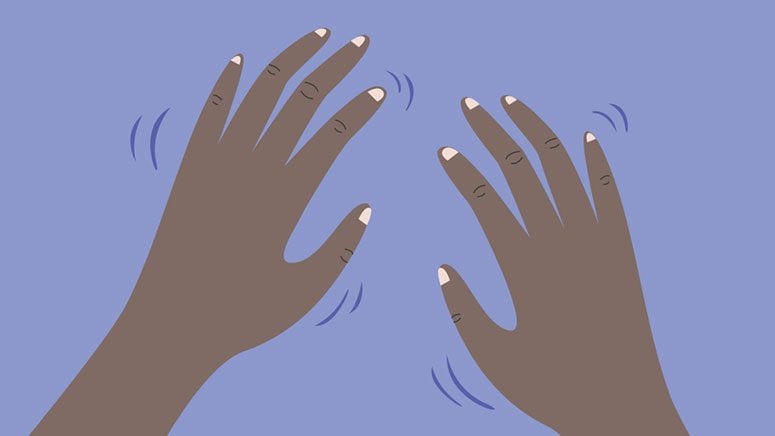Parkinson’s disease is a neurological disease that disrupts balance and movement. It occurs when the brain cells responsible for producing dopamine, a chemical in the body that regulates mood and movement deteriorate. According to research, the most common symptom of Parkinson’s disease is tremor.
This article discusses the type of tremors people with Parkinson’s disease experience, how to live with Parkinson’s, and the symptoms that accompany the condition.
Causes of Parkinson’s tremor

The primary cause of Parkinson’s tremors is not understood. However, it is associated with the breakdown of cells in the brain responsible for producing dopamine. The cause of a tremor depends on the type of tremor. Symptoms of the condition also may be different for everyone. According to research, over 75 percent of people diagnosed with Parkinson’s disease have some type of tremor. However, some people with the condition may not have tremor.
The most common early sign of the disease is rest tremors. It is commonly used to make an early diagnosis of Parkinson’s disease. According to research, people with Parkinson’s may experience different types of tremors.
A 2018 study involved about 400 participants diagnosed with Parkinson’s. The study showed that:
- About 20 percent of the participants experienced no rest tremor when the study started
- About 90 percent of the participants experienced some type of tremor
- About 70 percent of participants experienced rest tremors
- About 50 percent of people with the condition experienced kinetic and postural tremors.
- Many people have also reported changes in the type, severity, and location of tremors throughout the course of their experience with Parkinson’s disease.
In most cases, people with Parkinson’s tremor experience changes in location, severity, and type of tremors during the course of the condition. Tremors are commonly felt in the hands. However, it may also occur in the following areas:
- Chin
- Legs
- Lips
- Arms
- Face
Tremors occur on only one side of the body during the early stages of the condition. The tremors start to spread to both sides of the body as the disease worsens. The severity and frequency of tremors are also affected by other factors such as extreme emotional states and stress.













